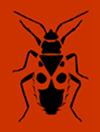土耳其南部黑腹果蝇和拟南果蝇(双翅目:果蝇科)体型和抗逆性的海拔差异
IF 1.2
3区 农林科学
Q2 Agricultural and Biological Sciences
引用次数: 0
摘要
抗寒性、耐热性和体型是热选择中重要的性状。纬度和海拔样带包括温度逐渐变化的环境。然而,尽管有关于自然种群体型和抗寒性影响的研究,主要是沿着纬度样带采样的,但很少沿着纬度样线进行此类研究。对饥饿和干燥的抵抗力也被认为受到温度的影响,是临床研究的重点。在这项研究中,我们测量了黑腹果蝇和拟果蝇的异母系在寒冷耐受性(冷昏迷恢复时间)、体型、饥饿抵抗力和干燥方面的变化,这些异母系起源于土耳其南部海拔横断面的四个位置(50 m–1500 m)。这表明,这两个物种在耐冷性和体型方面沿海拔剖面存在一定程度的差异,而在抵抗饥饿和干燥方面没有差异。这项研究揭示了黑腹果蝇和拟黑腹果蝇之间的一些差异和相似之处。*通讯作者;电子邮件:ergideniz.ozsoy@hacettepe.edu.tr引言物种的分布及其在许多数量性状中的表型变异是由不同的环境因素(温度、气压、湿度等)决定的。时空变化的环境条件是驱动性状进化的选择性因素。生物体通过局部适应不同的环境条件来应对这些不同的选择压力,最终在性状上产生突变(Endler,1977)。温度是影响各种性状的最重要的环境因素之一,尤其是在外胚层中(Cossins&Bowler,1987),因此许多物种的温度极限都有报道(Stillman&Somero,2000;Duarte等人,2012年;van Heerwaarden等人,2012)。包括体型(Calboli et al.,2003)和耐寒性在内的许多性状的纬度梯度的可重复性表明,自然选择比人口统计学或其他随机过程更重要。同样,沿纬度样带的环境变化与沿纬度样线的环境变化非常相似。然而,在地理尺度上,纬度和海拔样带显示出显著的差异;最低纬度和最高纬度之间的差异可以覆盖数千公里,而在《欧洲昆虫学报》中只有几公里。119:140-1472022 doi:10.144411/eje.2022.015本文章由计算机程序翻译,如有差异,请以英文原文为准。
Altitudinal variation in body size and resistance to stress in Drosophila melanogaster and D. simulans (Diptera: Drosophilidae) in southern Turkey
Tolerance of cold and heat and body size are traits that are important in thermal selection. Latitudinal and altitudinal transects include environments that gradually change in temperature. However, while there are studies on the effects on body size and cold tolerance in natural populations sampled mostly along latitudinal transects, there are few such studies along altitudinal transects. Resistance to starvation and desiccation, which are also thought to be affected by temperature, are the focus of studies on clines. In this study, we measured the variation in tolerance of cold (chill coma recovery time), body size, resistance to starvation and desiccation in isofemale lines of Drosophila melanogaster and D. simulans that originated from four locations (50 m – 1500 m) along an altitudinal transect in the southern part of Turkey. This revealed clines in the tolerance of cold and body size along the altitudinal transect with some degree of difference between these two species, whereas there were no clines in resistance to starvation and desiccation. This study revealed some differences and similarities between the sibling species D. melanogaster and D. simulans. * Corresponding author; e-mail: ergideniz.ozsoy@hacettepe.edu.tr INTRODUCTION Distribution of species and their phenotypic variation in many quantitative traits are shaped by different environmental factors (temperature, air pressure, humidity etc.). Spatially or temporally changing environmental conditions act as selective agents driving the evolution of traits. Organisms cope with these varying selective pressures by local adaptation to different environmental conditions, which eventually generates clines in traits (Endler, 1977). Temperature is one of the most important environmental factors affecting various traits, especially in ectotherms (Cossins & Bowler, 1987) and thus thermal limits are reported for many species (Stillman & Somero, 2000; Duarte et al., 2012; van Heerwaarden et al., 2012). The reproducibility of the latitudinal clines for many traits, including body size (Calboli et al., 2003) and cold tolerance, suggests that natural selection is more important than demographic or other stochastic processes. Similarly, the environmental variation along altitudinal transects is very similar to that along latitudinal transects. However, latitudinal and altitudinal transects show a remarkable difference in terms of geographic scales; the difference between the lowest and highest latitude can cover thousands of kilometres, whereas it can be only a few kilometres in Eur. J. Entomol. 119: 140–147, 2022 doi: 10.14411/eje.2022.015
求助全文
通过发布文献求助,成功后即可免费获取论文全文。
去求助
来源期刊
CiteScore
2.30
自引率
7.70%
发文量
43
审稿时长
6-12 weeks
期刊介绍:
EJE publishes original articles, reviews and points of view on all aspects of entomology. There are no restrictions on geographic region or taxon (Myriapoda, Chelicerata and terrestrial Crustacea included). Comprehensive studies and comparative/experimental approaches are preferred and the following types of manuscripts will usually be declined:
- Descriptive alpha-taxonomic studies unless the paper is markedly comprehensive/revisional taxonomically or regionally, and/or significantly improves our knowledge of comparative morphology, relationships or biogeography of the higher taxon concerned;
- Other purely or predominantly descriptive or enumerative papers [such as (ultra)structural and functional details, life tables, host records, distributional records and faunistic surveys, compiled checklists, etc.] unless they are exceptionally comprehensive or concern data or taxa of particular entomological (e.g., phylogenetic) interest;
- Papers evaluating the effect of chemicals (including pesticides, plant extracts, attractants or repellents, etc.), irradiation, pathogens, or dealing with other data of predominantly agro-economic impact without general entomological relevance.

 求助内容:
求助内容: 应助结果提醒方式:
应助结果提醒方式:


